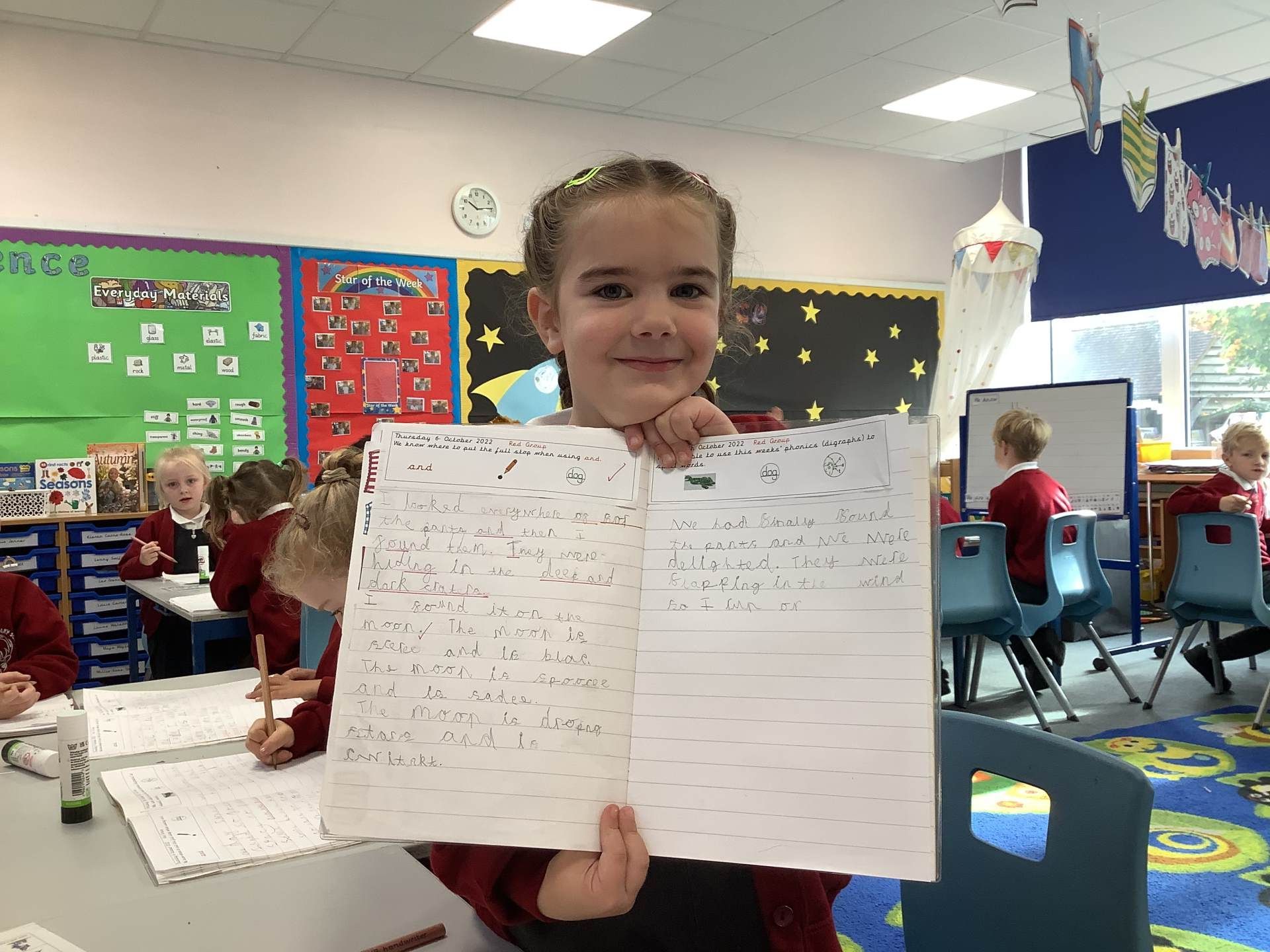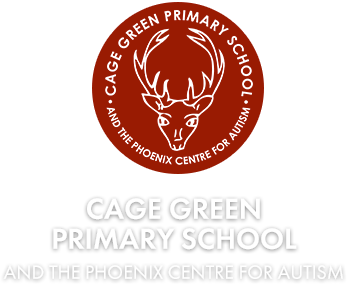What Does Writing Look like at Cage Green?
This page is a work in progress, so look our for ongoing updates.
Writing starts with what we call emergent writing. While this can't be read by others, it shows that the child understands that marks have meaning and is the first stage of writing. Often, children can tell us what this writing says.
Isn't this great? This writing has huge value (as long as it is the child's best work!) This work was something to do with either a person or an alien who had a spaceship! Can you spot the alien?
Next comes the development of the connection of writing and sounds. Children first begin to use sounds at the beginning of words (initial sounds). Then they use sounds at the ends of words (final sounds) and then they use sounds in the middle of words (medial sounds). We develop this, alongside high quality phonics teaching so that children write CVC (consonant, vowel, consonant) words. Here is Dannique's work where she has written some CVC words. This is fabulous work because you can see where she has used her sound buttons. (Phonics page and sound buttons explanation to come!)
I'm sure you can recognise the words she has used here.
Children's use of their phonics develops through a carefully structured programme so that they can write more complicated words. Here is a piece of work that Logan did when he was in Year One. It is a record of some materials work in science.
Can you see where he has written 'glass,' 'see-through' and 'fragile'? The spellings aren't correct, but at this stage, we don't care. He has conveyed meaning through absolutely brilliant use of phonics.
Alongside phonics, children learn 'common exception words' which are words that aren't phonetically decodable but are used a lot. These words have to be learnt from memory. Keiran wrote this recount of a trip to the Cutty Sark. Can you see how he has used his phonics, but also knows some words that can't be sounded out, such as 'the'?
In Key Stage One, we place a HUGE emphasis on the basics: phonics, handwriting and full stops/capital letters. We think that if children leave Year Two with these basics embedded, it means they will be more enthusiastic writers, have better stamina and find the new skills they have to learn in Key Stage Two easier. Our expectations of handwriting are VERY high, but fluent hand writers find writing easier.
Throughout the school, structure and feedback are a huge part of children learning to write. Children need to know what they are doing well and what they need to do better. We think marking is hugely important so that children know these two things. Pink underlining/highlighting shows what the child has done well and verbal feedback or an improvement prompt shows the children their next step. Checklists help to reduce cognitive load and to show what a good piece of writing includes. What checklists look like and how teachers write the improvement prompts depends on how old children are. In this photo, you can see E's pinks to show what she has done well and her checklist. Upper school checklists are shown in later writing samples.

You can see that 'ing' is highlighted because the children have been learning this suffix. You can also see that 'and' is highlighted because the children have been learning to use conjunctions and 'ou' has also been highlighted so she has praise for her great use of phonics.
Checklists not only help to reduce cognitive load, but they also remind children of past learning that they need to include. This helps build sticky knowledge and skills.
Key Stage Two builds a range of skills. Sentence structure, spelling development, choice of language for effect and composition of a text are a few of the many, many skills that are learnt.
Threaded through all of this is that idea that children are writing for a purpose. We want our children to be writers and writers write for a reason. Our curriculum provides plentiful opportunities for this, but our children are so enthused, they choose to write in their own time. On our website, you can see Leon's welcome to the school. He did this in his own time because he wanted to write about the school; putting it on the website was an after thought.
Here, you can see another one of our children writing for a purpose and in their own time. This child has PCD, a lung condition that makes life tricky. She wrote this poem to express her feelings and to help others understand.
writing for purpose medical.pdf
Max in Year Five wrote this poem. Can you guess what poem the class had looked at for inspiration?
the wolog and the snaar by max.pdf
Max in Year Six and Kaison in Year Six have produced some wonderful writing. They produced these two pieces earlier in the year. Imagine what they can do now!


